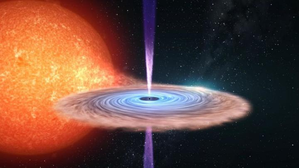New Delhi: A team of scientists from the Aryabhatta Research Institute of observational sciences (ARIES), an autonomous institute of the Department of Science and Technology (DST), on Monday said they have traced the effect of plasma composition on dynamics of astrophysical jets from celestial bodies.
Astrophysical jets are outflows of ionised matter that are emitted as extended beams from celestial objects such as black holes, neutron stars, and pulsars.
The scientists showed that the change in plasma composition leads to the difference in propagation velocities of the jets even if the initial parameters for the jets remain the same.
“Jets composed of electrons and positrons were found to be slowest in comparison to jets containing protons, contrary to expectation. Protons are about two thousand times more massive than electrons or positrons,” the Ministry of Science & Technology said in a statement.
Despite years of research, it is not known what kind of matter astrophysical jets are composed of — whether they are made of bare electrons or protons or whether positively charged electrons called positrons are also present.
Knowing the jet composition is vital as it will allow scientists to pinpoint the exact physical process at work near black holes and neutron stars.
The research, led by Raj Kishor Joshi and Dr Indranil Chattopadhyay from ARIES, was published in the Astrophysical Journal. The authors upgraded a numerical simulation code earlier developed by Dr Chattopadhyay and used the said equation of state to study the dynamics of astrophysical jets composed of a mixture of electrons, positrons (positively charged electrons), and protons.
–IANS


Comments are closed.